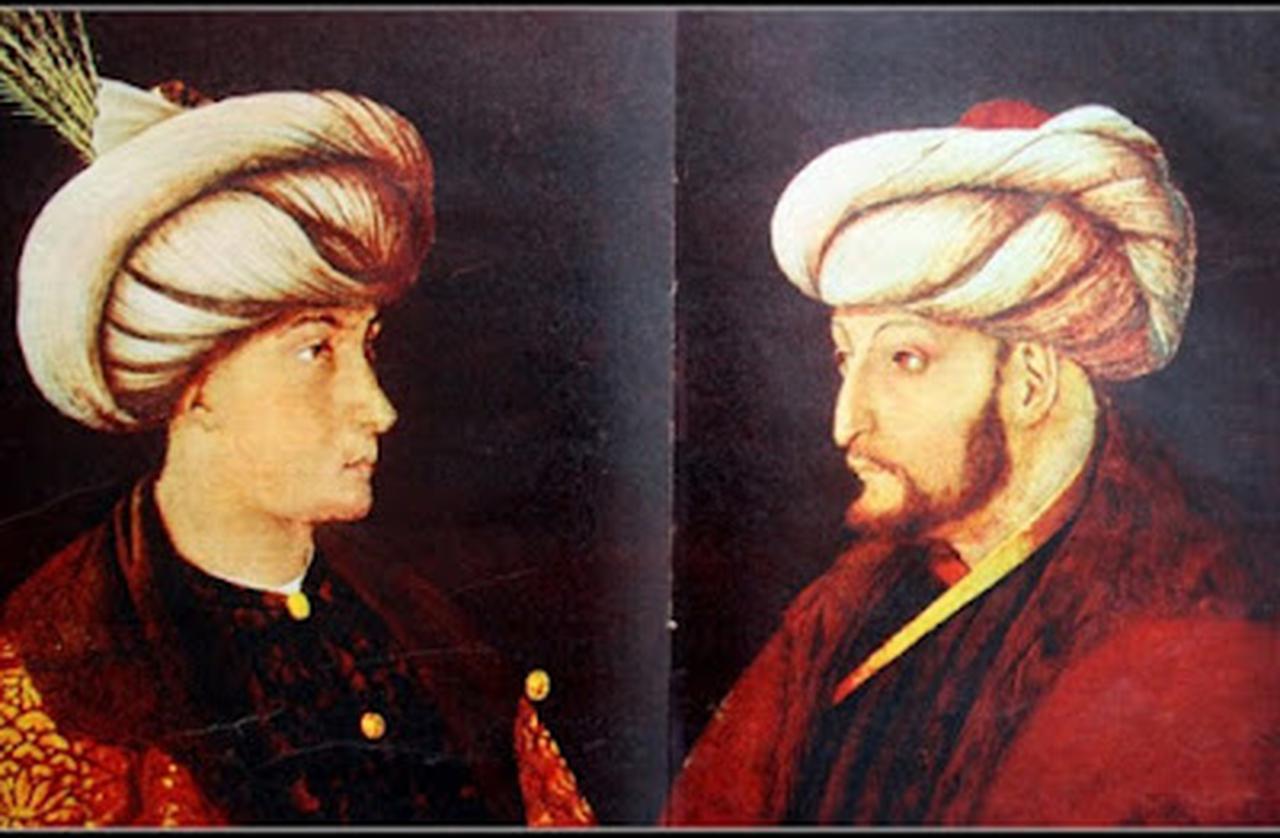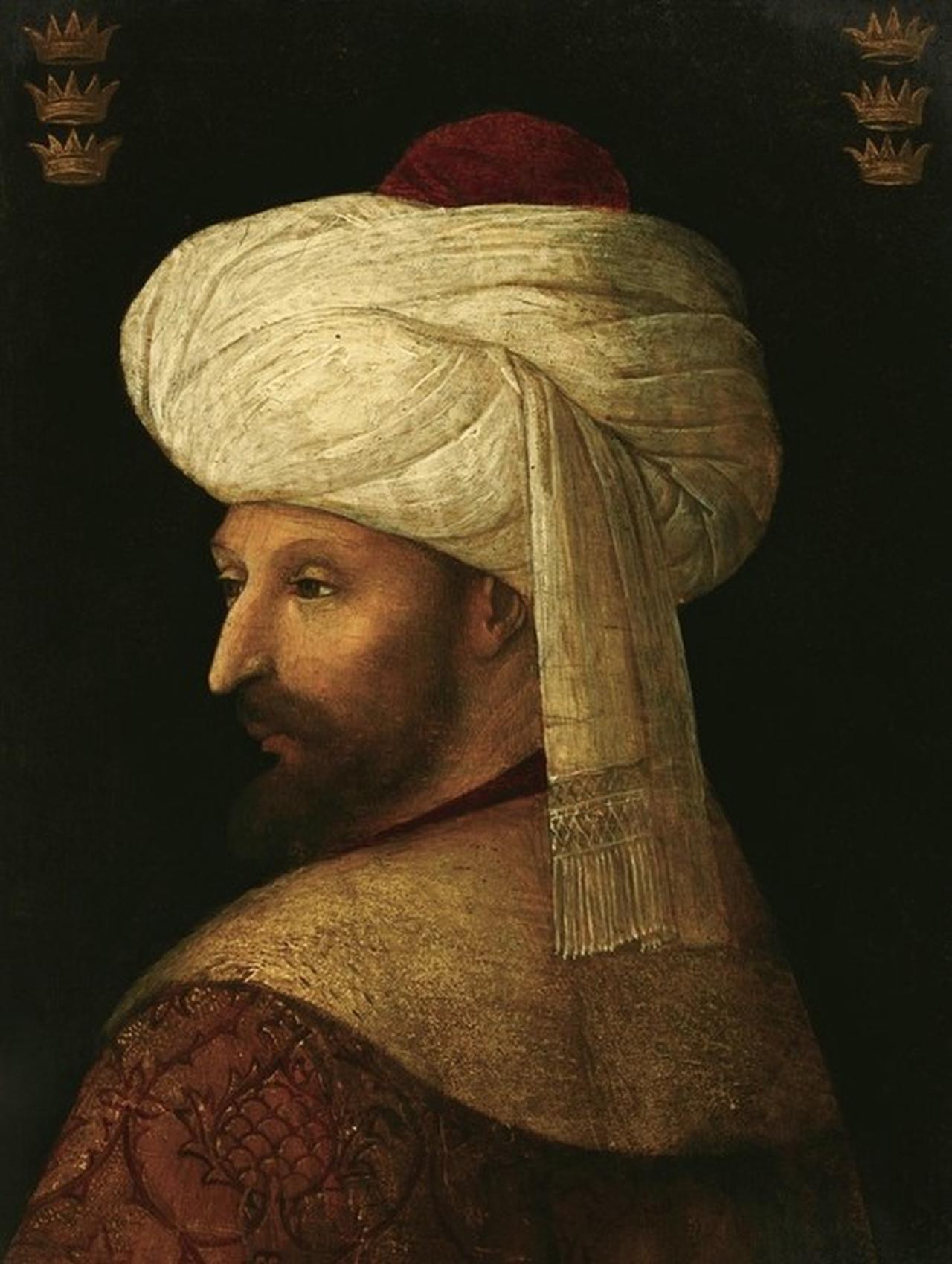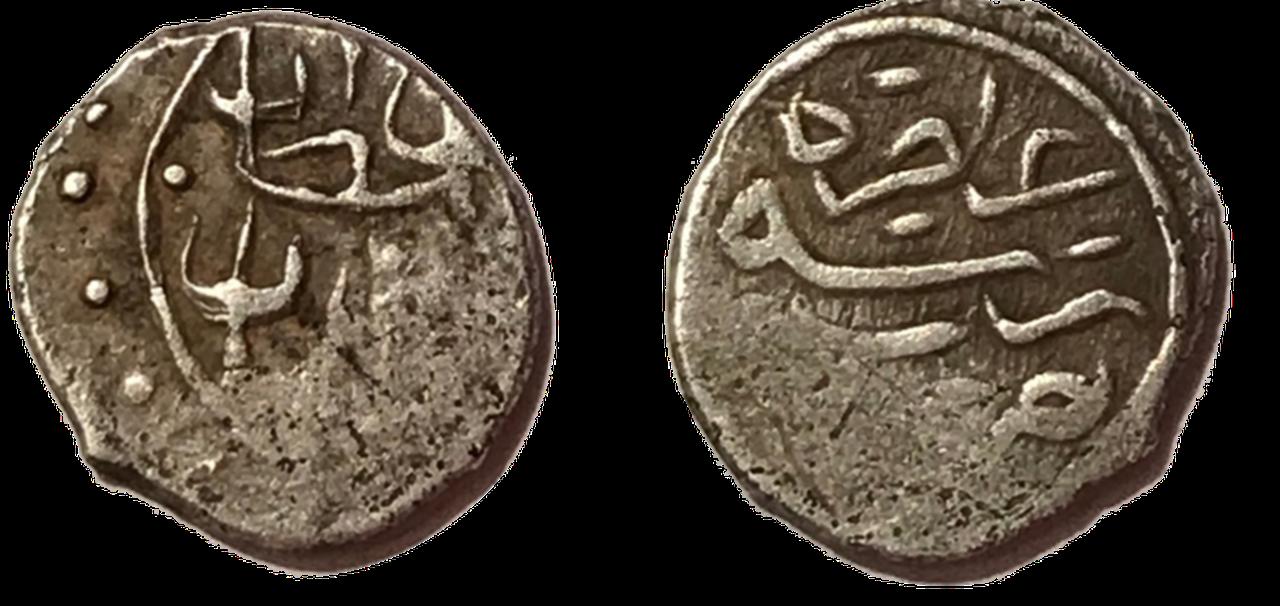
Upon the death of Sultan Mehmed II, Grand Vizier Karamani Mehmed Pasha, to prevent any unrest in the land, concealed the sultan's passing from the army. He secretly had the sultan's body placed in a carriage and, accompanied by physicians and high-ranking officials, brought it to Istanbul. To prevent potential riots in Istanbul, transportation from the piers was removed to hinder the army's crossing into the city. News of Sultan Mehmed's death was sent to the heirs to the throne, Princes Bayezid and Cem.
These actions of Grand Vizier Pasha led some statesmen who were aware of the situation to believe that the grand vizier, who had previously supported Prince Giyaseddin Cem, intended to bring Prince Cem to Istanbul quickly and enthrone him. Among these statesmen were Hersekzade Ahmed Pasha, the Beylerbey of Rumelia and son-in-law of Prince Bayezid, and Sinan Pasha, the beylerbey (governor) of Anatolia and also a son-in-law of Prince Bayezid. They began to take the necessary steps for Prince Bayezid to ascend the throne.
Firstly, the messengers sent to Prince Cem were detained, causing him to learn of his father's death later than he otherwise would have. In the "Vakiat-i Sultan Cem" (Events of Sultan Cem), this situation is described as follows: "Cem did not receive news of his father's death. Had he received the news, he could have arrived in Istanbul before Bayezid, as Konya is four days closer to Istanbul than Amasya. If he had arrived in Istanbul, Cem would have become the ruler."
Later, news of Sultan Mehmed's death began to spread among the janissaries, elite infantry units in the Ottoman army. Consequently, the janissaries revolted, forcibly entered Istanbul, and enthroned Prince Bayezid's young son, Korkut Celebi, as his regent. During the ensuing demonstrations in Istanbul, Grand Vizier Pasha and Sultan Mehmed's personal physician, the Jewish Yakub Pasha, were killed.
While this internal turmoil was occurring in Istanbul, the messenger sent to Prince Bayezid, Keklik Mustafa Cavus, reached Amasya on May 7, 1481. Although Prince Bayezid initially reacted with hesitation, upon receiving letters of invitation and warning, he arrived in Uskudar within nine days. On May 22, 1481, he took the throne from his son, who was acting as his regent, and ascended himself. The following day, the funeral prayer for Sultan Mehmed the Conqueror was performed, led by Sheikh Muslihiddin Ebu'l-Vefa.

Prince Cem claimed he had a right to the Ottoman lands due to the inheritance laws. In the section on inheritance in Fatih's Kanunname (Law Book), Prince Cem's name was mentioned in the part concerning the titles of the princes, and Sultan Mehmed the Conqueror had addressed him as "My son Sultan Cem, heir to the Suleymanic realm." Furthermore, Prince Cem stated that he was born during his father's reign and had served as his father's regent in Istanbul during the Uzun Hasan campaign, thus asserting his claim to the throne.
Driven by this conviction and the counsel of his advisors and Karamanoglu Kasim Bey, he decided to take action. He sent one of his commanders, Gedik Nasuh Bey, with forces from the Karaman, Varsak, and Turgutlu tribes via Inegol to Bursa. On May 28, Gedik Nasuh Bey defeated the forces sent against him by Sultan Bayezid under the command of Ayas Pasha and gained control of Bursa. Kemalpasazade Tarihi (Kemalpaaazade's History) even mentions that Ayas Pasha and his janissaries were captured, stripped naked, and brought barefoot before Prince Cem, where they were treated very badly.
Prince Cem arrived in Bursa and, during his 18-day stay, had coins minted and sermons read in his name, securing the allegiance of the surrounding populace to his rule. Following this, Prince Cem began to see himself as the ruler of Anatolia.
As the situation grew increasingly serious, Sultan Bayezid, in an attempt to avert a potential danger, tried to win over Prince Cem's supporters, especially his tutor Astinoglu Yakup Bey, by offering him the beylerbeylik of Anatolia. He made moves to weaken Prince Cem's power and began preparations for a campaign against him, gathering an army from Istanbul.
Prince Cem sent a delegation to Sultan Bayezid, consisting of his elder aunts and Selcuk Hatun, the very old daughter of Celebi Mehmed, as well as the scholar Mevlana Ayas. This delegation asked Sultan Bayezid to recognize the current situation and divide the Ottoman Empire into two. Sultan Bayezid responded to the requests of this delegation with the proverb, "There is no mercy among rulers." Kemalpasazade states that these proposals were rejected with the words, "Two sovereigns cannot reside in one country, and two commanders cannot lead one army." Sultan Bayezid received this delegation and then sent them back, immediately mobilizing his army.

During this time, Gedik Ahmed Pasha, returning from the Otranto campaign, joined the sultan's army, further strengthening it. Although Gedik Ahmed Pasha was inclined toward Prince Cem, his father-in-law Ishak Pasha's appointment as grand vizier swayed him to Sultan Bayezid's side. Ismail Hakki Uzuncarsili mentions that Gedik Ahmed Pasha and Sultan Bayezid had a disagreement dating back to the Battle of Otlukbeli, and a promise from that time was being fulfilled, but Sultan Bayezid had requested that this dispute be put aside during the battle.
On June 20, 1481, the decisive battle for the Ottoman throne began fiercely. As a result of the betrayal of Prince Cem's tutor, Astinoglu Yakub Bey, and the desertion of the Karaman and Varsak Turkmens who had incited Prince Cem against the Sultan, Prince Cem, who was wounded in the leg by a horse's kick, was first attacked by bandits and then retreated to Eskisehir and from there to Konya, the seat of the sultanate.
Sultan Bayezid pursued Prince Cem and arrived at the place where Prince Cem had been robbed. There, he was met by many people with goods and possessions. Upon learning that these individuals were the ones who had robbed his brother, Sultan Bayezid became very angry and had them killed. Prince Cem, not feeling safe in Konya, set out with his family toward the Mamluk lands on June 28.
While crossing the Taurus Mountains, Prince Cem was robbed by Uyuz Bey and reached Tarsus and then Adana. Upon arriving in the territories under the rule of the Ramazanogulları Beylik, he was hosted and given feasts. With the permission of Mamluk Sultan Qaitbay, he arrived in Aleppo via Antioch. Subsequently, he reached Egypt via Gaza on Aug. 25 and entered Cairo with a procession befitting royalty.
The next day, he appeared before Sultan Qaitbay, and they shook hands and embraced upon meeting. Although Sultan Qaitbay treated Prince Cem well, the Prince's longing for his homeland did not subside. During this time, Prince Cem corresponded with his elder brother, Sultan Bayezid, and in one letter expressed his state: "You lie on a bed of roses, joyful and laughing, while I lie on ashes in the bath of misery—what is the reason?"
Sultan Bayezid, in turn, promised to pardon him on the condition that he renounced his ambitions for the throne. However, these correspondences yielded no results. Eventually, Prince Cem, intending to perform the Hajj pilgrimage, requested permission from Sultan Qaitbay, who sent him to the Hejaz. After completing the Hajj, he returned to Cairo.
Upon returning to Cairo after the Hajj, Prince Cem found himself entangled in new conspiracies. Karamanoglu Kasım Bey, aiming to reclaim his former beylik amid the Ottoman Empire’s unrest, sought to use Cem for his ambitions. To this end, Karamanoglu Kasim Bey sent provocative letters to Prince Cem, urging him to engage in another struggle for the throne. He even attempted to persuade Prince Cem by forging letters purportedly from Gedik Ahmed Pasha. In essence, upon receiving this news, Prince Cem decided to take action with the support of the Mamluk Sultanate. Despite heated debates in the councils held in the presence of Sultan Qaitbay, Prince Cem, with the sultan's permission, crossed into Anatolia and embarked on another bid for the throne.
Karamanoglu Kasim Bey met Prince Cem in Adana and secured a promise that the Karaman lands would be given to him if Prince Cem were successful. Prince Cem sent his kapicibasi (head gatekeeper), Sinan Bey, to Gedik Ahmed Pasha in hopes of reaching an agreement, but this attempt was unsuccessful. Prince Cem also sent Trabzonlu Mehmed Bey, who was cooperating with Karamanoglu Kasim Bey, toward Ankara Castle.
On June 6, 1482, accompanied by Karamanoglu Kasim Bey, he marched on Konya and laid siege to the city. However, due to the fierce defense of Konya by its governor, Hadım Ali Pasha, he achieved no result. Subsequently, upon receiving news of the defeat and death of Trabzonlu Mehmed Bey, whom he had previously sent to Ankara, during the siege there, Prince Cem lifted the siege of Konya and personally marched on Ankara. However, he achieved no success at this point either. Upon hearing of Sultan Bayezid's advance, he retreated with Karamanoglu Kasim Bey to Tasili.
Prince Cem once again entered into negotiations with his elder brother, Sultan Bayezid II, who had followed him to Eregli. Kapicibasi Sinan Bey, acting as Prince Cem's envoy to Sultan Bayezid, requested that a portion of the Ottoman lands be placed under Cem's administration. However, this proposal was far from Sultan Bayezid's mind.
In his letter to Prince Cem, Sultan Bayezid wrote: "It is not hidden from your enlightened heart that the Ottoman realm resembles a veiled and delicate bride from head to toe. It cannot bear the engagement of two grooms, nor can a partnership endure its wrath. Therefore, close your ears to evil suggestions. Do not tire your horse in vain with the reins of ambition, and do not unjustly stain your pure skirts with the blood of Muslims. What if you were to choose to reside with honor and happiness in the Holy City of Jerusalem and settle in those sacred lands? Whatever your current personal treasury revenues are, they will all be sent to you in full each year. The Sultan has sworn to this."
However, Prince Cem persistently repeated his demands through new delegations. Finally, Sultan Bayezid responded to the verses in Cem's letters from Cairo with the following verses: "Since sovereignty was destined for us from the day of eternity, what reason is there for such discontent with fate? You claim the pilgrimage to the holy sanctuaries, so why this excessive demand for worldly dominion?" Cem Sultan turned his back on all of his brother's positive offers and insisted on a share of the property and possessions inherited from their father. Thereupon, Hersekzade Ahmed Pasha was sent against Cem Sultan with the Anatolian army.
Prince Cem intended to go to Damascus or Persia if the negotiations failed. However, as a result of his meeting with Karamanoglu Kasim Bey, he decided to cross to the Rumelian side by sea due to Kasim Bey's insistence and persuasion. In fact, Prince Cem aimed to go to the Akkoyunlu ruler. However, Karamanoglu Kasim Bey reminded him of the Interregnum and stated that Musa Celebi had acted similarly. Karamanoglu Kasim Bey was particularly insistent on crossing to Rumelia, as he could then easily achieve his own ambitions while Sultan Bayezid was occupied with Prince Cem in Rumelia. However, Prince Cem, believing this was for his own good, set sail from Korkos Harbor with about thirty men on July 18, 1482, toward Rhodes. Thus began Prince Cem's 13-year European adventure.